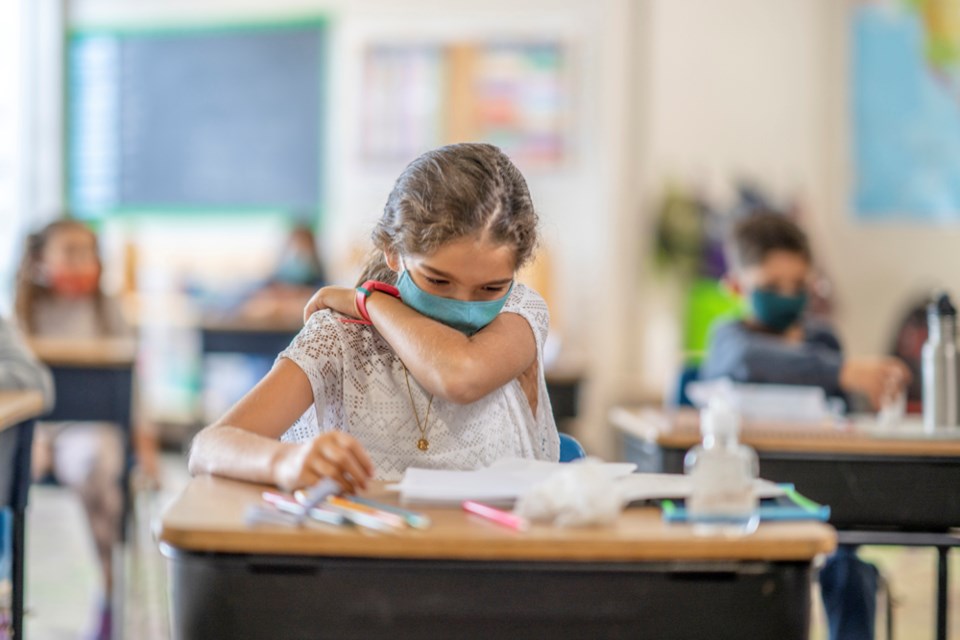Want to know about the COVID-19 situation in your child’s school?
You’ll have to rely on your fellow parents – and you can help by keeping the school in the loop about your own child’s absences.
Up until winter break, families had received information about COVID exposures at their children’s schools from local health authorities. Exposure dates were posted on health authority websites, and “self-monitor” or “self-isolation” letters were sent to designated close contacts, as deemed necessary.
Even that information was limited, since exposure notifications never publicly disclosed how many cases were involved in an “exposure” – making it impossible to say how many COVID cases were actually seen in schools.
But, since the Omicron surge has dramatically increased case counts across B.C., even the limited information that had been published will no longer be available. The province has abandoned the practice of contact tracing – since the huge number of cases, the increased transmissibility of the virus and its short incubation period make it impractical to notify everyone who’s been in contact with someone who has tested positive.
“With the high transmission, the shorter incubation period, the timing of these notifications was moot. It was no longer effective in going to combat the spread of COVID-19,” New Westminster school district superintendent Karim Hachlaf explained during a Q&A with parents Thursday night.
The Jan. 13 meeting, held virtually via Zoom, was hosted by the New Westminster district parent advisory council (DPAC).
The shift means that if a person with COVID-19 has been in a school, students and teachers won’t be informed by health officials.
“We will not be continuing the same kind of school notification process,” Hachlaf said.
But he stressed that, even with the public health shift to “individual self-management,” the school district will remain in contact with Fraser Health.
Instead of focusing on individual cases, the district will now rely on student attendance and absenteeism as “activity signals” of when COVID-19 may be spiking in a school or classroom.
What parents need to do
Hachlaf said parents are instrumental in helping the district to do that by ensuring they keep schools fully informed of the reason for absence when a student stays home (for instance, illness, isolation, appointments, etc.).
“This is where we need to jointly play a part in relying on parents,” he said. “That will help us as we continue to closely track student absenteeism and what we are calling potential ‘activity signals.’”
If a school sees an absenteeism rate of 10% above typical, or a total rate of 25% absenteeism for a school or a particular grade, then the school district will coordinate with public health on possible next steps.
Hachlaf said the shift to “self-management” means individual families will need to personally notify their own close contacts if a student tests positive.
If a family notifies the teacher that a student has tested positive, Hachlaf said that information will not be shared with the class at large.
Follow Julie MacLellan on Twitter @juliemaclellan.
Email Julie, [email protected].



